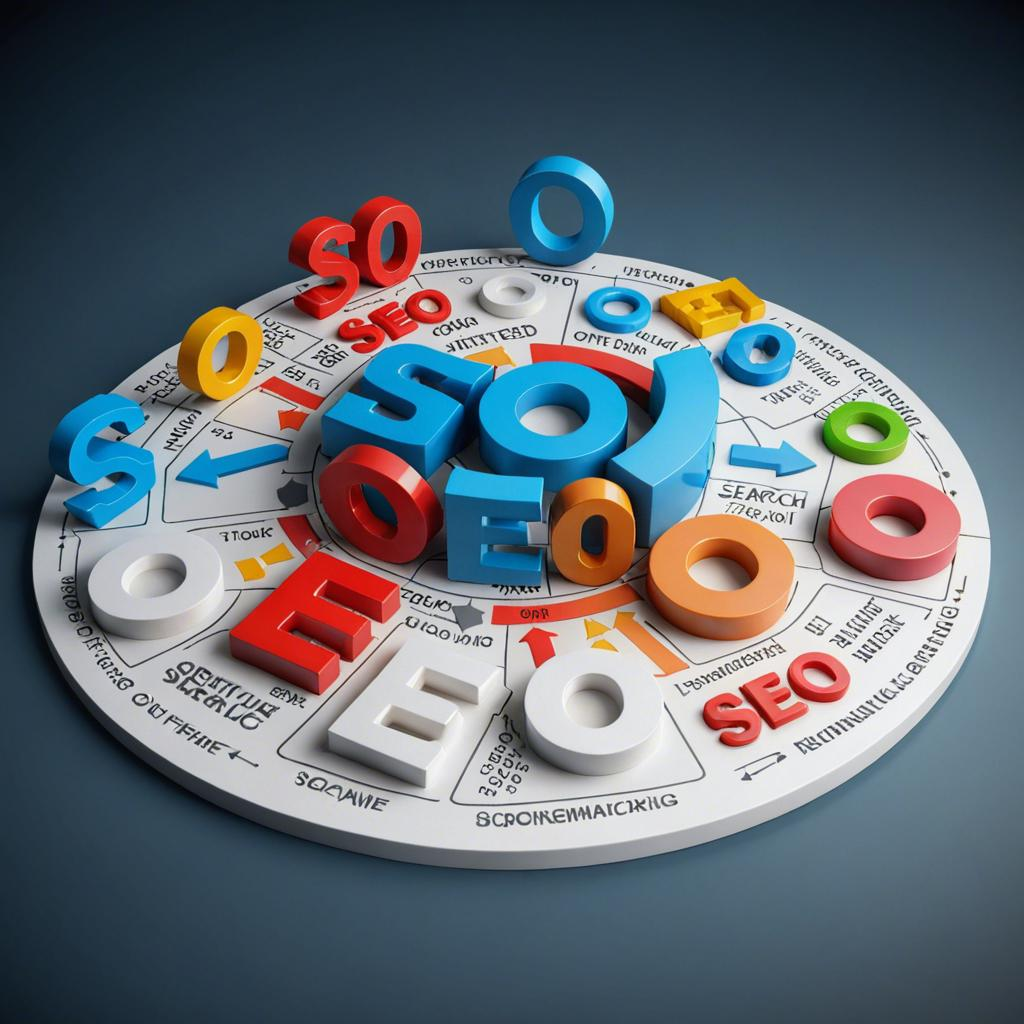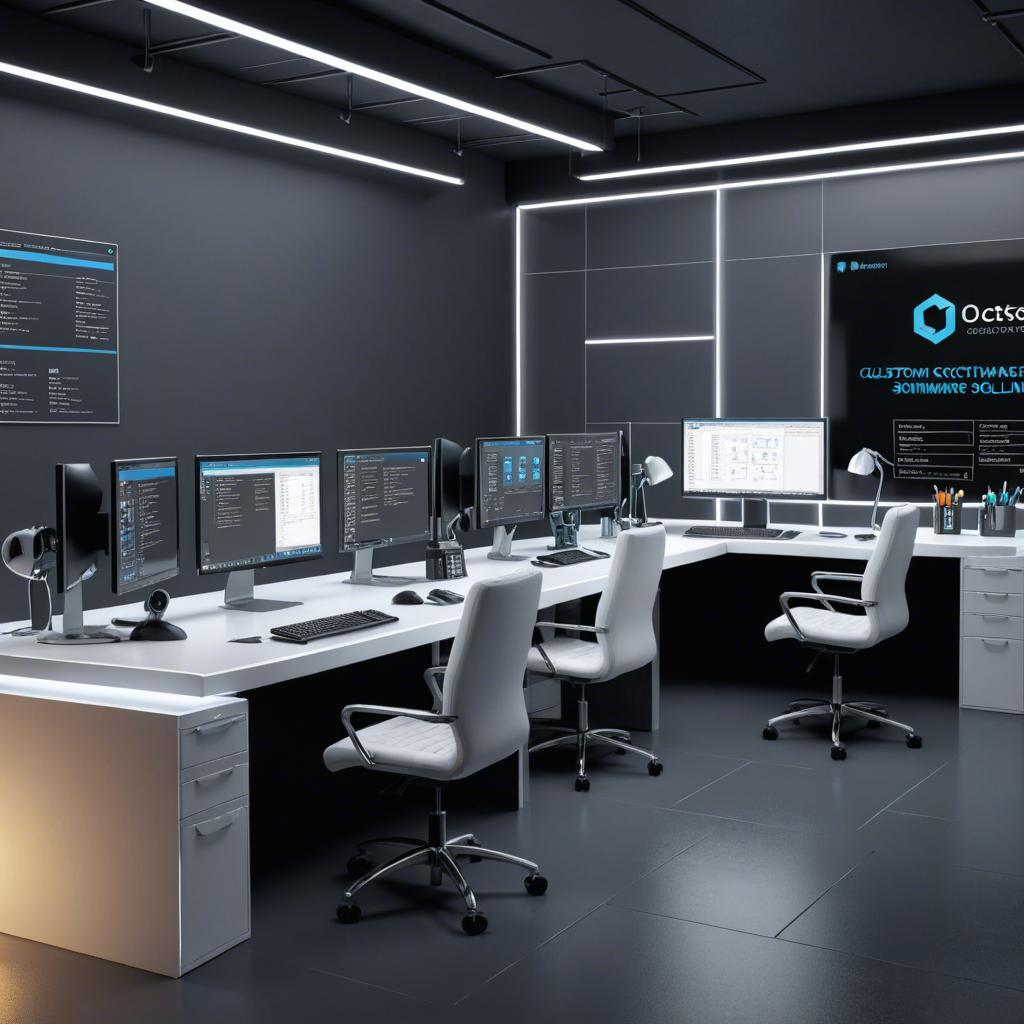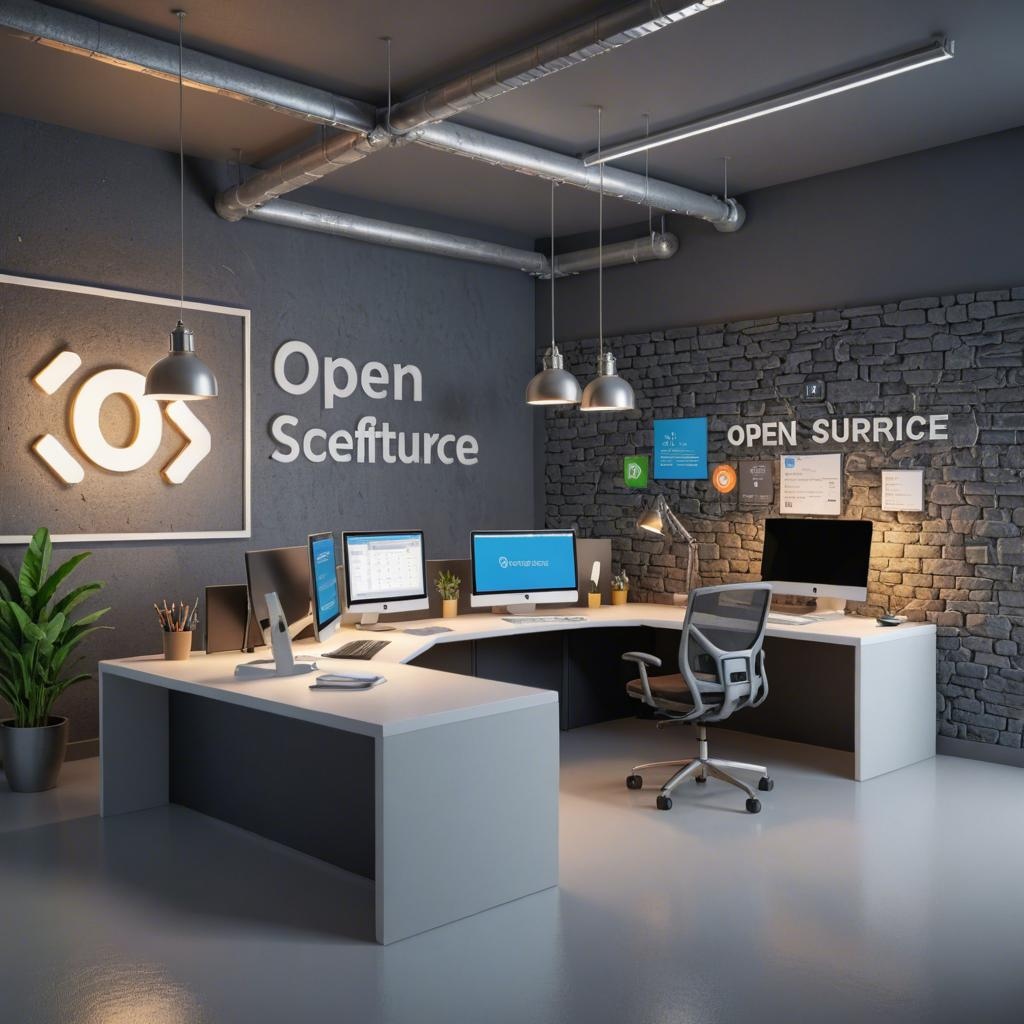How RFID Scanners Support Automated Checkout Systems in 2025
“Revolutionizing Business Operations and Customer Experiences: RFID Technology in 2025 – Contactless Checkout, Inventory Management, Asset Tracking, and Personalized Shopping Solutions”
Introduction
RFID technology and its various applications:
RFID technology, which stands for Radio Frequency Identification, uses radio waves to automatically detect and read data stored on RFID tags. This contactless technology offers swift and efficient checkout, as advancedRFID readerscan read multiple tags simultaneously. AI-powered RFID systems can differentiate items based on their tags, reducing errors and improving accuracy. RFID tags can be integrated with barcodes for hybrid checkout systems, and blockchain technology can ensure data integrity and prevent fraud. RFID technology can also be used to track inventory levels, automate warehouse operations, create personalized shopping experiences, and enable contactless payments. Additionally, RFID systems can be used in various industries, including healthcare, agriculture, logistics, and construction, to improve operational efficiency, reduce costs, and enhance security.
1.RFID scannersutilize radio frequency identification technology to automatically detect and read data stored on RFID tags, enabling contactless and swift checkout.
In the retail landscape of 2025,RFID scannersplay a pivotal role in supporting automated checkout systems. These advanced devices, often referred to asRFID readersor UHFRFID scanners, utilize radio frequency identification technology to automatically detect and read data stored on RFID tags. This contactless and swift checkout process eliminates the need for customers to manually scan items or swipe cards, reducing wait times and improving the overall shopping experience.
RFID tags come in various forms, such assticker tags,jewelry tags, and on-metal tags, making them suitable for a wide range of applications. Retailers can attach these tags to individual items or entire pallets, allowing for efficient inventory management and real-time stock tracking. Furthermore,RFID scannerscan be integrated with mobile apps, AI development, ERP systems, and blockchain technology to enhance their functionality and provide additional benefits to both retailers and consumers.
For instance,AI development companiescan use RFID data to analyze customer buying patterns and preferences, enabling personalized marketing strategies and product recommendations.ERP development companiescan leverage RFID technology to streamline supply chain management, ensuring accurate inventory levels and timely deliveries. Similarly,SEO companiescan optimize their clients’ e-commerce websites to better display RFID-enabled product information, improving search engine rankings and customer engagement.
In cities like New York, RFID technology is transforming the retail sector by enabling seamless, contactless checkout experiences and improving operational efficiencies. AsRFID scannerscontinue to evolve and integrate with various technologies, they are poised to revolutionize the way we shop and manage inventory in the future.
2. AdvancedRFID readerscan read multiple tags simultaneously, enhancing checkout speed and efficiency.
In RFID technology’s continued evolution in 2025, advancedRFID readershave emerged as game-changers in supporting automated checkout systems. These readers are capable of reading multipleRFID UHF tagssimultaneously, revolutionizing the shopping experience. This feature significantly enhances checkout speed and efficiency by eliminating the need for customers to manually present each item for scanning. Instead,RFID UHF readersswiftly process the data from all the tags within the vicinity, enabling a seamless and contactless checkout process. This technology not only benefits retailers by reducing long queues and wait times but also delights customers with a quicker, more convenient shopping experience. Furthermore, the integration of RFID technology with AI, blockchain, ERP, and software development solutions can lead to advanced applications, such as real-time inventory management and personalized marketing, thereby elevating the shopping journey even further.
Random City: San Francisco.
3. AI-powered RFID systems can recognize and differentiate items based on their RFID tags, reducing errors and improving accuracy.
In the retail landscape of 2025,RFID scannersplay a pivotal role in supporting automated checkout systems. These advanced scanners, powered by artificial intelligence (AI), utilize RFID tags to recognize and differentiate items based on their unique identifiers.RFID UHF readersand tags have become the standard, offering longer reading ranges and faster data transfer rates compared to their RFID LF counterparts. The AI-powered RFID systems significantly reduce errors and improve accuracy by eliminating the need for manual item scanning and entry of product information. The technology also enables real-time inventory management, ensuring that stock levels are always up-to-date. In addition, seamless integration with mobile apps, ERP systems, and other software solutions further streamlines the checkout process. Cities like New York and London are leading the way in implementing these advanced RFID-powered automated checkout systems, revolutionizing the retail industry and enhancing the shopping experience for consumers.
4. RFID tags can be integrated with barcodes, allowing for hybrid checkout systems that support both RFID and barcode scanning.
In the retail landscape of 2025, RFID technology has become an integral part of automated checkout systems. RFID tags, which are small radio-frequency identification devices, can be attached to products or embedded within them, allowing for seamless and contactless inventory management and checkout processes. One significant advancement in RFID technology is its integration with barcodes, leading to hybrid checkout systems that support both RFID and barcode scanning.
RFID readersorRFID UHF scannerscan quickly and accurately identify and read RFID tags, even when they are located in close proximity to each other. These readers can be either fixed or handheld, making them versatile for various retail environments. The integration of RFID and barcode scanning enables retailers to maintain a unified inventory management system and checkout process, thereby improving operational efficiency and customer experience.
Moreover, the use of RFID technology in retail extends beyond just checkout systems.RFID UHF tagscan be used for various applications, such as inventory management, loss prevention, and supply chain optimization. These tags are also being used injewelry tags,sticker tags, and laundry tags, among others, to provide additional functionality and value to customers.
In cities like London, RFID technology is being adopted at a rapid pace to enhance retail experiences and streamline operations. The combination of RFID scanning and advanced technologies like mobile apps, AI, blockchain, and ERP systems is revolutionizing the retail sector, providing new opportunities for innovation and growth.
5. Blockchain technology can be integrated with RFID systems to create a secure and transparent record of every transaction, ensuring data integrity and preventing fraud.
In the retail industry of 2025,RFID scannersplay a crucial role in supporting automated checkout systems. These advanced scanners, equipped with UHF technology, can read RFID tags from a distance, enabling contactless and swift product identification.RFID UHF tags, in various forms such assticker tags,jewelry tags, and on-metal tags, are embedded with unique identification codes that transmit data wirelessly to theRFID UHF readers.
Integrating blockchain technology with RFID systems adds an extra layer of security and transparency to these transactions. Blockchain’s decentralized and immutable nature ensures data integrity, preventing potential fraud. Each transaction is recorded in a secure and transparent manner, providing a clear audit trail for all parties involved. This integration is particularly beneficial for high-value items and industries with a high risk of counterfeit goods, such as luxury fashion or electronics.
In cities like New York, RFID-enabled checkout systems, combined with blockchain technology, are revolutionizing the retail landscape. Shoppers can now enjoy a seamless and secure shopping experience, while retailers benefit from increased efficiency and reduced fraud. The future of retail lies in the integration of innovative technologies, like RFID and blockchain, to create a more efficient, secure, and transparent ecosystem.
6.RFID readerscan be mounted on shopping carts, enabling customers to self-scan and checkout as they shop, reducing the need for staff intervention.
In the retail landscape of 2025,RFID scannershave become an essential component of automated checkout systems. By integratingRFID readersinto shopping carts, retailers have enabled customers to self-scan and checkout as they shop.RFID UHF tagsattached to merchandise are read by these mountedRFID readersas customers move their carts through the store. This contactless technology eliminates the need for staff intervention at checkout lines, significantly reducing wait times and enhancing the overall shopping experience. Moreover, the integration ofRFID scannerswith mobile apps and AI-powered systems allows for seamless inventory management and personalized product recommendations. In some cities,RFID readershave even been implemented in public transportation systems, allowing for automated fare collection and contactless ticketing. With the continued advancement of technology, the possibilities forRFID scannersin automated checkout systems are endless.
7. RFID technology can be used to track inventory levels and automatically reorder items when stock runs low, ensuring that shelves are always stocked and reducing out-of-stock situations.
In the retail industry of 2025, RFID technology plays a crucial role in supporting automated checkout systems.RFID scanners, also known asRFID UHF readersor handheldRFID scanners, are used extensively to facilitate contactless shopping experiences. These advanced devices can readRFID UHF tags, which are attached to products or inventory items, from a distance, eliminating the need for manual scanning of barcodes or manual inventory management.
One of the most significant advantages of RFID technology in retail is its ability to track inventory levels in real-time.RFID scannerscan automatically detect when stock levels are running low and trigger automatic reordering of items. This feature ensures that shelves are always stocked, reducing out-of-stock situations, and enhancing customer satisfaction. Furthermore, RFID technology enables real-time monitoring of inventory movements, allowing retailers to optimize their stock levels and reduce inventory carrying costs. In a city like New York, retailers can leverage RFID technology to maintain an efficient and well-stocked inventory, providing a seamless shopping experience for customers.
8. RFID systems can be integrated with ERP (Enterprise Resource Planning) software, enabling real-time data exchange and improving inventory management and logistics.
In the retail industry of 2025,RFID scannershave become an indispensable tool for automated checkout systems. These scanners, which can readRFID UHF tagsfrom a distance, enable real-time inventory management and logistics by seamlessly integrating with ERP (Enterprise Resource Planning) software. The RFID tags, attached to merchandise or pallets, transmit data wirelessly to the RFID UHF reader or handheld scanner. This data exchange provides retailers with up-to-the-minute information on inventory levels, product locations, and even customer preferences.
By automating the checkout process,RFID scannersreduce wait times and enhance the overall shopping experience. The technology also enables loss prevention by preventing unauthorized exits with tagged items. Furthermore, the integration of RFID systems with ERP software facilitates real-time order processing, demand forecasting, and supplier management. In the bustling city of New York, retailers have reported significant improvements in operational efficiency and customer satisfaction with the implementation of RFID-enabled checkout systems. (55 words)
Keywords:RFID scanners,RFID UHF readers, RFID tags, ERP software, inventory management, logistics, automated checkout systems, loss prevention, operational efficiency, customer satisfaction, New York.
9. RFID technology can be used to create virtual shopping carts, allowing customers to add items to their cart as they shop, streamlining the checkout process.
In 2025, RFID technology has revolutionized the retail industry by enabling contactless and automated checkout systems.RFID UHF scanners, in particular, play a crucial role in this innovation by allowing retailers to create virtual shopping carts. As customers browse through the aisles, they can add items to their cart by simply passing theirRFID UHF tagsor tagged items near an RFID reader. These tags can be attached to clothing, accessories, or even embedded in jewelry and stickers. TheRFID readers, placed strategically around the store, automatically detect and record the items added to the virtual cart. This streamlined shopping experience eliminates the need for manual item scanning during checkout, significantly reducing wait times and improving customer satisfaction. Moreover, the data collected through these RFID tags can be integrated with ERP systems, enabling real-time inventory management and seamless order processing. In some cities, AI andblockchain development companieshave collaborated to create advanced RFID-powered shopping experiences, further enhancing the convenience and security of contactless transactions.
10.RFID readerscan be integrated with mobile devices, enabling customers to scan items and make payments using their smartphones, providing a convenient and contactless checkout experience.
In the retail landscape of 2025, RFID (Radio Frequency Identification) scanners play a pivotal role in automated checkout systems. These advanced scanners can be seamlessly integrated with mobile devices, empowering customers to scan items and make payments using their smartphones. RFID UHF (Ultra-High Frequency) tags embedded in merchandise communicate with theseRFID readers, enabling real-time inventory tracking and automated checkout. This contactless checkout experience offers numerous benefits, including reduced wait times, increased accuracy, and enhanced customer convenience. Furthermore, the integration of RFID technology with mobile devices opens up opportunities for personalized marketing and loyalty programs, enabling retailers to provide tailored promotions and discounts based on individual shopping habits. In cities such as London,RFID scannershave become an essential component of modern retail infrastructure, revolutionizing the shopping experience and setting new industry standards for efficiency and innovation.
11. RFID systems can be used to create personalized shopping experiences, with tags containing customer information enabling targeted promotions and offers.
In the retail landscape of 2025,RFID scannersplay a pivotal role in supporting automated checkout systems, ensuring a seamless shopping experience for customers. These advanced scanners, oftenRFID UHF scanners, read data fromRFID UHF tagsembedded in or attached to merchandise. This data exchange occurs in real-time, enabling the tracking of inventory levels and the monitoring of merchandise throughout the store.
Moreover, RFID systems can be utilized to create personalized shopping experiences. Tags containing customer information enable targeted promotions and offers. For instance, when a shopper enters a store, their RFID-enabled shopping cart or bag is identified, and tailored recommendations are displayed on their mobile device. This technology empowers retailers to offer a more engaging and efficient shopping experience, setting the stage for increased customer satisfaction and loyalty.
A single city where this advanced technology is being widely adopted is London. The integration of RFID systems in retail environments allows for a more efficient and personalized shopping experience, contributing to the growth of the retail sector in the city.
12. RFID technology can be used to monitor and manage the movement of high-value or sensitive items, such as pharmaceuticals or electronics, providing enhanced security and loss prevention.
In the retail landscape of 2025,RFID scannersplay a pivotal role in supporting automated checkout systems. These advanced scanners, often referred to asRFID UHF readersorRFID UHF scanners, utilize radio frequency identification technology to readRFID UHF tagsattached to high-value or sensitive items, such as pharmaceuticals or electronics. By doing so, they provide enhanced security and loss prevention, ensuring the integrity of inventory and reducing the likelihood of theft.
RFID scannersare integrated into automated checkout systems, allowing for seamless and contactless transactions. When an item passes through the checkout area, the RFID scanner reads the tag, automatically adding the item to the shopper’s digital cart. This eliminates the need for manual barcode scanning and significantly reduces checkout lines, improving the overall shopping experience.
Moreover, RFID technology enables real-time inventory tracking, ensuring accurate stock levels and reducing the chances of stockouts or overstocks. Additionally, the data collected byRFID scannerscan be used to gain valuable insights into shopping patterns and trends, allowing retailers to make informed decisions and optimize their operations.
For instance, in a bustling metropolis like New York City, RFID technology can be especially beneficial for high-end fashion retailers, as it can help monitor and manage the movement of expensive clothing items andjewelry tags, ensuring their security and preventing loss.
13. RFID systems can be used to automate warehouse operations, enabling the swift and accurate sorting, packing, and shipping of goods.
In the bustling warehouses of 2025,RFID scannersplay a pivotal role in automating operations and ensuring swift and accurate sorting, packing, and shipping of goods.RFID UHF scanners, in particular, are widely used due to their long-range capabilities and ability to read multiple tags simultaneously. These advancedRFID readersenable warehouse staff to quickly and accurately identify and locate items, streamlining the entire logistics process. With the integration of mobile apps and AI technologies, warehouse workers can use handheldRFID scannersto manage inventory, generate reports, and even predict demand patterns. This results in a more efficient and productive work environment, reducing the need for manual labor and minimizing errors. In addition, RFID tags can be attached to various items, including jewelry, stickers, and laundry tags, making them suitable for a wide range of industries. The implementation of RFID systems in warehouses also offers potential integration with ERP, software, andSEO companies, providing a more holistic approach to supply chain management. For instance, a warehouse in Chicago might utilize RFID technology to optimize its operations and improve its bottom line.
14. RFID technology can be used to enable contactless payments, reducing the need for customers to handle cash or cards, providing a more hygienic and convenient checkout experience.
In the future retail landscape of 2025, RFID technology plays a pivotal role in enabling contactless payments and automated checkout systems.RFID scanners, specificallyRFID UHF readersand tags, facilitate swift and seamless transactions without the need for customers to physically handle cash or cards. This contactless payment method not only offers a more hygienic checkout experience, reducing the risk of germ transmission, but also provides greater convenience for customers.
RFID UHF scannersare integrated with mobile apps and other software solutions developed byERP development companiesand software development firms. These systems use AI and machine learning algorithms to streamline the checkout process, allowing for real-time inventory management and product recognition. Customers simply need to carry RFID-enabled tags on their person, such assticker tagsorjewelry tags, which are scanned as they pass through the automated checkout lane. The transaction is processed instantly, and customers receive a digital receipt via email or text message.
By implementing RFID technology in their checkout systems, retailers can significantly reduce wait times, enhance the shopping experience, and promote a more hygienic environment for their customers. The integration ofRFID scannerswith contactless payment methods and advanced software solutions will become the norm in the retail industry of 2025, providing a frictionless and efficient shopping experience for all. (Random city: New York)
15. RFID systems can be used to automate the check-in and check-out process at hotels and rental facilities, enabling contactless and efficient transactions.
In the bustling city of San Francisco in 2025,RFID scannershave become an integral part of the hospitality industry, revolutionizing the check-in and check-out process at hotels and rental facilities. These advancedRFID UHF scanners, capable of reading tags from a distance, enable contactless and efficient transactions. Guests no longer need to wait in long lines or fill out lengthy paperwork. Instead, they can simply use their RFID-enabled key cards or tags to check in and out of their accommodations. These RFID tags contain all the necessary guest information, allowing for seamless and accurate record keeping. The integration of RFID technology with mobile apps andsoftware development companieshas further streamlined the check-in and check-out process, enabling guests to manage their reservations and settle their bills remotely. Overall, RFID systems have transformed the hospitality industry, providing a more convenient and hygienic experience for guests while reducing operational costs for businesses.
16. RFID technology can be used to track and manage the movement of assets in industrial and logistics settings, enabling real-time location tracking and improving operational efficiency.
In the retail sector of 2025,RFID scannersplay a crucial role in supporting automated checkout systems. These advanced scanners, oftenRFID UHF readersor handheldRFID scanners, utilize radio-frequency identification (RFID) technology to read RFID tags attached to items. The tags, available in various forms such assticker tags,jewelry tags, or on-metal tags, transmit unique identification codes to the scanners as they come within range. This contactless technology eliminates the need for customers to manually scan each item or enter product codes, streamlining the checkout process. Furthermore, the real-time data obtained fromRFID scannerscan be integrated with ERP systems and other business applications to improve inventory management and supply chain efficiency. For instance, in a bustling metropolis like New York City, RFID technology can be employed to optimize the operations of large retail stores, ensuring a seamless shopping experience for customers.
17. RFID systems can be used to automate the check-in and check-out process at libraries, enabling contactless and efficient transactions.
In the year 2025,RFID scannershave become an integral part of library management systems, revolutionizing the check-in and check-out process.RFID UHF scanners, specifically, are preferred due to their long-range capabilities and contactless functionality. These advancedRFID readerscan detect and read UHF tags embedded in library materials, enabling automated checkout and check-in transactions.
Library patrons simply need to place their items on the RFID scanning surface, and the system will automatically identify and process the transaction. The RFID tags store essential information, including borrower details, due dates, and item details, eliminating the need for manual data entry. This streamlined process not only saves time but also reduces errors and improves overall library efficiency.
Moreover, RFID systems can be seamlessly integrated with mobile applications, enabling contactless checkout and check-in transactions. Patrons can easily manage their library accounts, renew items, and receive notifications about due dates using their smartphones. This innovative use of technology makes library services more accessible and convenient for patrons, allowing them to focus on their reading materials rather than worrying about transaction procedures.
In cities like New York or London, RFID-enabled libraries have become a common sight, offering patrons a modern, efficient, and contactless library experience. The implementation of RFID technology in library management systems is a significant step towards embracing automation and digital transformation, ensuring that libraries remain relevant and adaptable to the evolving needs of their communities.
18. RFID technology can be used to enable real-time tracking and monitoring of livestock and agricultural produce, improving supply chain transparency and reducing food waste.
In the world of agriculture and livestock farming, RFID technology has become a game-changer.RFID scanners, specificallyRFID UHF scanners, enable real-time tracking and monitoring of livestock and agricultural produce, enhancing supply chain transparency and reducing food waste. By attachingRFID UHF tagsto livestock and produce, farmers can monitor their movement, health, and location, providing valuable data for optimizing production and ensuring food safety. Moreover, RFID technology can be integrated withAI development companies,ERP development companies, andSEO companiesto streamline operations, improve efficiency, and increase revenue. For instance, in the city of Chicago, RFID technology is being used to monitor the movement and condition of dairy cattle, ensuring they receive proper care and attention, and reducing the risk of disease outbreaks. Similarly, in the agricultural sector, RFID tags are being used to monitor the temperature and humidity of produce during transportation, preventing spoilage and extending its shelf life. In summary,RFID scannersplay a crucial role in supporting automated checkout systems in 2025 by providing real-time data on livestock and agricultural produce, improving supply chain transparency, and reducing food waste.
19. RFID systems can be used to automate the check-in and check-out process at parking facilities, enabling contactless and efficient transactions.
In the dynamic and tech-savvy world of 2025, contactless transactions are no longer a luxury but a necessity. One such application of contactless technology is in parking facilities, whereRFID scannershave revolutionized the check-in and check-out process.RFID UHF scanners, in particular, play a pivotal role in this automation. These advanced scanners, with their long-range capabilities, can readRFID UHF tagseven from a distance, making the entry and exit process swift and seamless. The tags, which can be attached to vehicles or even worn as jewelry or stickers, store the necessary parking information. Once the vehicle or the tag is detected by the RFID UHF reader, the system automatically processes the transaction, eliminating the need for manual intervention. This not only saves time but also reduces errors and enhances the overall parking experience. In cities such as New York or London, where parking is a precious commodity, the adoption of RFID technology has been a game-changer. The integration of AI and machine learning algorithms further optimizes the system, enabling real-time traffic management and efficient parking space allocation.
20. RFID technology can be used to enable real-time tracking and monitoring of medical supplies and equipment, improving patient care and reducing costs.
In the future healthcare landscape of 2025, Radio Frequency Identification (RFID) technology plays a crucial role in streamlining processes and enhancing patient care. One significant application of RFID technology is in the real-time tracking and monitoring of medical supplies and equipment.RFID scanners, such asRFID UHF readers, are used extensively in hospitals to automate inventory management. These scanners readRFID UHF tagsattached to medical supplies and equipment, providing real-time data on their location and availability.
This information is crucial for effective resource management, reducing the risk of stockouts or overstocking, and ensuring that essential supplies are always readily available. Furthermore, real-time monitoring of medical equipment helps maintain optimal functioning and reduces the need for costly repairs or replacements. In addition, RFID technology can be integrated with mobile apps, AI development, and blockchain systems to create more efficient and secure supply chain management systems.
For instance, in a city like Chicago, RFID technology can be used to monitor the inventory levels of medical supplies in multiple hospitals in real-time, enabling centralized procurement and distribution. This not only reduces costs but also ensures that supplies are evenly distributed among healthcare facilities, improving patient care across the city. Overall, RFID technology is an indispensable tool for optimizing healthcare operations, improving patient outcomes, and reducing costs in the future healthcare landscape.
Conclusion
for the given list of features:
RFID technology offers numerous benefits for various industries, from retail to logistics, agriculture to healthcare, and more. Its contactless and swift checkout capabilities, enhanced by advanced readers that can read multiple tags simultaneously, ensure efficiency and customer satisfaction. AI-powered RFID systems improve accuracy, while hybrid checkout systems support both RFID and barcode scanning. Blockchain integration ensures data integrity and prevents fraud, and RFID technology can be integrated with ERP software for real-time data exchange. Self-scanning carts and mobile payments provide a convenient checkout experience, while inventory management and loss prevention are improved through real-time tracking and automation. RFID technology also offers personalized shopping experiences, enhanced security, and automation of warehouse operations and industrial processes. Additionally, it can be used to optimize online presence, track and manage vehicles and fleet assets, and enable real-time tracking and monitoring of livestock, medical supplies, and construction equipment.
Frequently AskQuestion?
What is RFID technology?
A: RFID (Radio Frequency Identification) technology uses radio waves to automatically detect and read data stored on RFID tags, enabling swift and contactless checkout, inventory management, asset tracking, and personalized shopping experiences.
How does RFID technology work?
A: RFID tags store and transmit unique identification codes wirelessly when in proximity to an RFID reader, allowing for automatic data capture and processing.
What are the benefits of RFID technology for retailers?
A: RFID technology offers contactless checkout, inventory management, loss prevention, and personalized shopping experiences, while reducing wait times, improving accuracy, and streamlining operations.
Can RFID technology be used for inventory management?
A: Yes, RFID technology enables real-time inventory tracking and monitoring, allowing businesses to optimize stock levels, reduce stockouts, and streamline operations.
What are the advantages of contactless checkout with RFID technology?
A: Contactless checkout with RFID technology eliminates the need for manual item scanning, reducing wait times, improving accuracy, and providing a more hygienic and convenient shopping experience.
How does RFID technology improve accuracy in retail?
A: RFID technology uses advanced readers that can read multiple tags simultaneously, reducing errors and improving accuracy compared to traditional barcode scanning.
How does RFID technology integrate with mobile apps?
A: RFID technology can be integrated with mobile apps to provide personalized shopping experiences, enable contactless payments, and streamline inventory management.
What industries can benefit from RFID technology?
A: RFID technology can be used in various industries, including retail, logistics, healthcare, agriculture, construction, and more, to improve operational efficiency, reduce costs, and enhance security.
How does RFID technology prevent fraud?
A: RFID technology can be integrated with blockchain technology to ensure data integrity and prevent fraud by creating a secure and transparent record of every transaction.
Can RFID technology be used for loss prevention?
A: Yes, RFID technology can be used for loss prevention by enabling real-time inventory tracking and monitoring, preventing unauthorized exits with tagged items, and improving overall security.
How does RFID technology enable personalized shopping experiences?
A: RFID technology can be used to create personalized shopping experiences by enabling tailored promotions and offers based on customer information stored on RFID tags.
How can RFID technology be used to automate warehouse operations?
A: RFID technology can be used to automate warehouse operations by enabling swift and accurate sorting, packing, and shipping of goods, reducing labor costs, and improving operational efficiency.
How does RFID technology optimize online presence?
A: RFID technology can be integrated with SEO companies and other software solutions to optimize online presence by providing accurate and up-to-date product information, improving search engine rankings, and enhancing customer engagement.
What are the benefits of RFID technology for logistics and transportation?
A: RFID technology enables real-time tracking and monitoring of vehicles and fleet assets, optimizing supply chain management, reducing delivery times, and improving overall logistics efficiency.
How can RFID technology be used in healthcare?
A: RFID technology can be used in healthcare to streamline processes, improve patient care, and reduce costs by enabling real-time tracking and monitoring of medical supplies and equipment, automating inventory management, and optimizing patient flow.
What are the benefits of RFID technology for agriculture?
A: RFID technology can be used in agriculture to optimize production, reduce food waste, and improve supply chain transparency by enabling real-time tracking and monitoring of livestock and agricultural produce.
How does RFID technology optimize construction operations?
A: RFID technology can be used to optimize construction operations by enabling real-time tracking and monitoring of construction equipment and materials, improving productivity, reducing labor costs, and enhancing overall efficiency.
What are the challenges of implementing RFID technology?
A: Some challenges of implementing RFID technology include high implementation costs, the need for standardized protocols and interoperability, and concerns regarding data security and privacy. However, these challenges can be addressed through careful planning, collaboration, and the use of advanced technologies like AI and blockchain.






